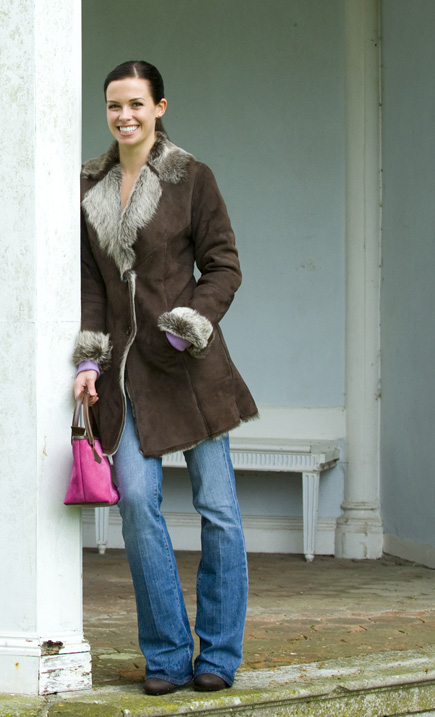
By Gary Bartholomew
The desire for a fur coat seems to be rooted in two parallel but seemingly contradictory themes: having a taste for something the symbolizes the height of modern elegance and style, and the primal connection that fur coats offer to our great human forebears who wore fur coats to keep warm for thousands of years.
Fur coats come in many varieties. The richness of variety in fur coats is rooted in the different types of fur available and in the various cut choices. The fur itself can vary significantly in its qualities depending upon the country of origin and other factors. Meanwhile, the fur coats themselves vary in quality depending upon how they are made.
One of the most popular types of fur coats is the shearling coat. If you are looking to purchase one of the best shearling coats, here is a quick overview of fur coats, with some tips on what to look for in a shearling coat.
Types of Fur Clothing
Fur itself is animal skin (leather) which is processed with the natural fur still attached. It can be shorn very short to create a felt effect such as would be used in a hat or gloves, or it can be cut mid-length or long for use in jackets, coats and other articles of clothing.
There is a large range of fur clothing products available in the marketplace today. They generally vary by cut, fur type and country of origin, as follows:
Cuts: Fur clothing comes in a large variety of shapes and sizes, including coats, jackets, hats, muffs, capes, vests, trims, sheared, wraps, and shawls. Most of these products some in both men's and women's styles.
Fur types: Fur types vary of course by the animal from which they originate. Some of the most popular animals whose skins are processed as fur are: fox, beaver, sable, mink, and shearling (sheepskin).
Fox furs are among the warmest furs available. There are many types of fox fur, such as long-haired, fine and silky. These are found in Russia, Australia and many other parts of the world.
Beaver furs are not only warm, they have water repelling characteristics. Most beaver fur articles of clothing are brown, and most come from North America.
Sable fur are known for being very silky. Russian sable fur, in particular, is known for its silky qualities.
Mink fur coats retain the reputation of being among the finest and rarest of fur coats. They enjoy a timeless image. Most mink is found in North America, although some are sourced from parts of Europe.
Shearling coats are made from sheep who have been recently sheared. The fleece (fur) is retained to the leather and then sheared. Shearling coats are excellent all-weather wear. They are soft to the touch and very warm.
Popular countries of origin: As mentioned above, fur coats are sourced from all over the world, including Australia, England, Iceland, New Zealand, Scandinavia, North America and South America.
How the Best Shearling Coats are Made
Choosing the right shearling coat is all about the craftsmanship. Every stage of the production process requires great skill to complete if high levels of quality are to be attained. It takes about a year from the time a trapper or farmer auctions his furs until a coat is actually ready for purchase and delivery.
Here are the stages to examine when considering the purchase of a fine shearling coat:
1. Tailoring: For custom coats, the tailoring process includes measuring for coat length and arm length, as well as body girth.
2. Fur Selection and Sizing: The template for the new garment, based in part upon the measurements taken during the tailoring stage, is laid out for the new coat. It outlines the shape of the coat and resembles somewhat a snow angel. The designer can then assign certain pieces of fur to each part of the coat to see how it will look. Individual pieces of fur are usually about 3 inches wide and 12 inches long.
3. Stitching: The individual pieces are then sewn together with needle and thread. Once all of the pieces are sewn together, the lining is added and then double-stitched to the coat.
4. Additions: Finally, exterior or interior pockets are added to the coat. A label is adding, along with buttons and button hole stitching.
The Best Shearling Coats: What to Look For
If you are looking for the best shearling coats, here are tips on what to look for:
1. Inquire about the origin of the coats in which you are interested: avoid sheepskins coats from Australia, New Zealand, Iceland and England. The sheepskin from these countries is heavy and not as flexible, thus making it not suitable for coats and jackets. However, if you are in the market for boots, slippers and seat covers, sheepskin from these countries will do just fine.
Meanwhile, in terms of sheepskin coats, those made in Spain are among the best. Reason: the climate in Spain produces the ultra-softest sheepskin in the world. Also, sheepskin from Argentina are among the finest in the world.
2. For thicker and heavier coats, consider one from Uruguay. These are ideal if you plan to wear one during extremely cold weather conditions.
3. If necessary, ask about whether they cater to plus size women.
Choosing the right shearling coat can be made easier once you understand the various choices available to you.
Aspen Fashions offers the largest selection of styles and colors of shearling coats of any online store. Buy online and we ship to your door. Visit us at: [http://www.AspenFashions.com]http://www.AspenFashions.com.
Article Source: [http://EzineArticles.com/?Best-Shearling-Coats---Tips-on-What-to-Look-For&id=3863530] Best Shearling Coats - Tips on What to Look For














No comments:
Post a Comment